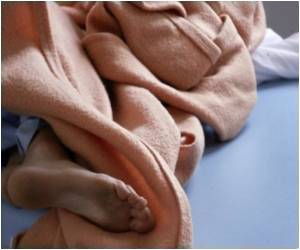
To determine if polysomnography may potentially predict adverse outcomes following a pediatric adenotonsillectomy, Eric M. Jaryszak, M.D., of the George Washington University School of Medicine, Washington, D.C., and colleagues, examined the records of 1,131 children who underwent an adenotonsillectomy by two attending surgeons at an academic pediatric hospital.
Preoperative polysomnography was performed on 151 patients, representing 13.4 percent of all those undergoing adenotonsillectomy. Of these, 23 (15.2 percent) experienced adverse respiratory events after surgery. Results of the polysomnography showed that patients who experienced respiratory complications had significantly higher apnea-hypopnea index (provides an overall severity of sleep apnea including sleep disruptions or low levels of oxygen in the blood), higher hypopnea index (episodes of overly shallow breathing or abnormally low respiratory rates) and lower nadir oxygen saturation (the lowest level of oxygen saturation).
Additionally, the 23 individuals who experienced complications had a higher body mass index (BMI) compared with those who did not have complications, with 47.8 percent defined as obese, according to BMI criteria, versus 29.7 percent in the non-complication subgroup.
Overall, the patients who experienced adverse respiratory events spent an additional 22 days in the hospital beyond routine overnight observation for persons with obstructive sleep apnea-hypopnea syndrome.
"Polysomnographic data may potentially be used for predicting which patients are at higher risk for adverse respiratory events after adenotonsillectomy," the authors conclude. "Such knowledge is valuable in planning postoperative management and perhaps intraoperative anesthesia management."
Advertisement
Source-Eurekalert















